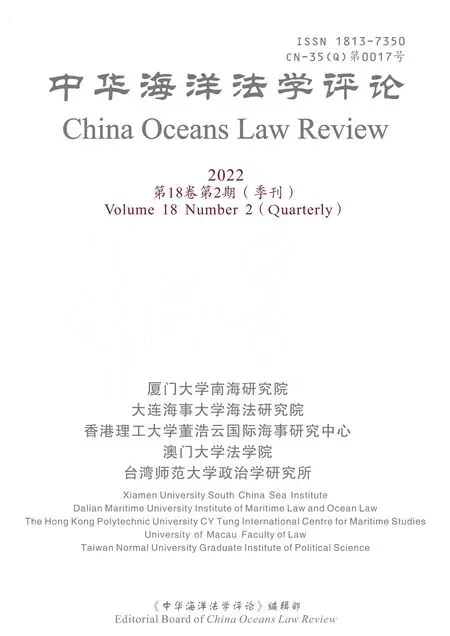A Comparative Analysis of Measuring Island Sustainable Development through a Blue Economy Lens
John N.Telesford
Abstract:The 17 Sustainable Development Goals (SDGs) 2015-2030,is applied holistically,to measure progress towards island sustainable development.The intricate link of islands to the Blue Economy (BE) has been established in literature.In this regard,island sustainable development can be analyzed at the nexus of the SDGs and the BE (coasts and oceans) of islands.To demonstrate progress towards sustainable development in this context,2021 data for six indicators related to SDG 14“Life Below Water”:marine protected area (MPA);ocean health index (OHI);fish from over exploited/collapsed fisheries (FOCF);fish caught by trawling/dredging (FCTD);fish caught and discarded (FCD) and marine biodiversity threats embodied in imports (MBEI),were gathered and analyzed for regions of small island clusters—Caribbean,Pacific and Atlantic/Indian Ocean/Mediterranean/South China Seas (AIMS).Descriptive statistics for the regions and the global ranges that indicate progress,were then compared and contrasted.A discussion on the findings suggests,goal-based development and integrated policy and stakeholder engagement as strategies island decision makers can consider to drive such development in relation to the SDGs and SDG interactions.
Key Words:Small island developing States region;Blue Economy;Goalbased development;Island sustainable development
I.Introduction
The 17 Sustainable Development Goals (SDGs) and 169 targets agreed to by over 190 countries in 2015 are intended to drive the2030 Agenda for Sustainable Development.1UNGA,Resolution adopted by the General Assembly on 25 September 2015,Transforming Our World:The 2030 Agenda for Sustainable Development,A/RES/70/1,UN website (21 Oct 2015),https://www.un.org/ga/search/view_doc.asp?symbol=A/RES/70/1&Lang=E.According to the official United Nations document:“The Sustainable Development Goals are integrated and indivisible,global in nature and universally applicable,taking into account different national realities …”2Id,para.55.From this perspective,the SDGs are holistic and are built on the extended interacting pillars of people,planet,prosperity,peace and partnerships or for this paper,the core 3Ps ofPeople (society),Prosperity (economy) and Planet (environment).SDG 14“Conserve and sustainably use the oceans,seas,and marine resources for sustainable development” or “Life Below Water”,is a key environmental goal,with 10 targets and associated indicators.In recent times,the Blue Economy (BE) has been promoted as an idea in which ocean and coastal zone resources are utilized in a more sustainable manner,especially in islands.A document published by the United Nations Environment Programme notes that “[t]he World’s ocean and coasts—the Blue World [is] the cornucopia for humanity”.3UNDP,A Green Economy in a Blue World,UNDP website (27 Nov 2015),https://www.undp.org/publications/green-economy-blue-world.The World Bank and United Nations Department of Economic and Social Affairs summarizes:“The ‘Blue Economy”[is] a concept [that] seeks to promote economic growth,social inclusion and preservation or improvements of livelihoods,while at the same time ensuring environmental sustainability.”4World Bank &United Nations Department of Economic and Social Affairs,The Potential of the Blue Economy:Increasing Long-term Benefits of the Sustainable Use of Marine Resources for SmallI Island Developing States and Coastal Least Developed Countries,World Bank,2017.
The BE concept therefore,focuses on the key 3Ps of sustainable development.Therefore,the SDGs in general and specifically SDG 14 that considers life below water,may be applied to measuring the progress of nations towards sustainable development.In this regard,239 indicators were developed for all the SDGs,while 10 indicators were created for SDG 14.5UNGA,Resolution adopted by the General Assembly on Work of the Statistical Commission pertaining to the 2030 Agenda for Sustainable Development,A/RES/71/313,E/CN.3/2021/2,Global indicator framework or the Sustainable Development Goals and Targets of the 2030 Agenda for Sustainable Development,https://unstats.un.org/sdgs/indicators/Global%20Indicator%20Framework%20after%202020%20review_Eng.pdf.However,Jeffrey D.Sachs et al.compiled measurable indicators for each of the SDGs and in this regard,six indicators,with readily available “global” data sets to measure them,were selected for SDG 14.6Jeffrey D.Sachs,Christian Kroll,Guillaume Lafortune,Grayson Fuller &Finn Woelm,Sustainable Development Report 2021:The Decade of Action for Sustainable Development,Cambridge International Press,2021.These will be introduced and elaborated in the literature review.
Small islands are at the forefront of the BE discourse and practice,and especially as a potential driver of island sustainable development.7United Nations Conference on Trade and Development,The Oceans Economy:Opportunities and Challenges for Small Island Developing States,United Nations Publications,2014;Marie-Therese Purvis,Seychelles’ Blue Economy Strategy,2015,http://www.finance.gov.sc/uploads/files/The_Blue_Economy_strategy.pdf;Julian Roberts &Ahmed Ali,The Blue Economy and Small States,Commonwealth Blue Economy Series,No.1,Commonwealth Secretariat,2016;Pawan G.Patil,John Virdin,Sylvia M.Diez,Julian Roberts &Asha Singh,Towards a Blue Economy:A Promise for Sustainable Growth in the Caribbean,World Bank Group,2016;Cyrus Rustomjee,Developing the Blue Economy in Caribbean and Other Small States,Center of International Governance Innovation,Policy Brief,No.75,2016;Supra note 4,World Bank &United Nations Department of Economic and Social Affairs;Marleen Schutter &Christina C.Hicks,Networking the Blue Economy in Seychelles:Pioneers,Resistance and Power Influence,Journal of Political Ecology,Vol.26:1,p.425-447 (2019).Recent research has also linked the BE and the SDGs,especially in island contexts.8Mark J.Spalding,The New Blue Economy:The Future of Sustainability,Journal of Oceans and Coastal Economics,Vol.2,Article8 (2016);Lee Ki-Hoon,Noh Junsung &Khim Jong Seong,The Blue Economy and the United Nations’ Sustainable Development Goals:Challenges and Opportunities,Environment International,Vol.137,105528(2020);Camilla Novaglio,Narissa Bax,Fabio Boschetti,Gholam Reza Emad,Stewart Frusher,Liam Fullbrook,Mark Hemer,Sarah Jennings,Ingridvan Putten,Lucy M.Robinson,Erica Spain,Joanna Vince,Michelle Voyer,Graham Wood &Elizabeth A.Fulton,Deep Aspirations:Towards A Sustainable Offshore Blue Economy,Reviews in Fish Biology and Fisheries,Vol.32,p.209-230 (2021);Rosa María Martínez-Vázquez,Juan Milán-García &Jaimede Pablo,Challenges of the Blue Economy:Evidence and Research Trends,Environmental Science Europe,Vol.33:1,Article 61 (2021).More specifically Kristy L.Nash and colleagues conducted assessments of the link between SDG 14 and the BE and interactions with other SDGs in small island developing States (SIDS) in Caribbean,Pacific and Atlantic/Indian Ocean/Mediterranean and South China Sea (AIMS).This paper will build on this research by expanding on the islands in the three regions and by taking a more “granular” approach to the assessment of progress with the SDGs indicators.Moreover,due to the importance of the BE to small islands,and the concomitant critiques of how its conceived and the challenges with its implementation,9Abdullahel Bari,Our Oceans and the Blue Economy:Opportunities and Challenges,Procedia Engineering,Vol.194,p.5-11 (2017);Kahlil Hassanali,CARICOM and the Blue Economy -Multiple Understandings and Their Implications for A Global Engagement,Marine Policy,Vol.120,104137 (2020);Supra note 8,Rosa María Martínez-Vázquezetal.measuring how the BE approach is contributing to island sustainable development has become more important.To the best of the author’s knowledge,this granular attempt has not been done in the context of islands and as such this paper is proposed to fill this gap.
This research therefore,may be the first attempt to use a “data driven” approach to comparatively understand how island sustainable development can be measured using the SDGs,from a holistic perspective.Therefore,the aims of the research are to measure,analyze and compare and contrast how islands located in three diverse regions:Caribbean,Pacific and AIMS are progressing towards island sustainable development in the context of the SDG 14/BE nexus and its interactions with other SDGs.Using the results from the analysis,the paper suggests two complementary strategies for embarking upon island sustainable development:Goal-based development or goal-based island sustainable development and integrated policy and stakeholder engagement.
II.Literature Review
A.SDGs as Measure of Sustainable Development?
In 2015,over 190 countries agreed to the2030 Agenda for Sustainable Development.17Sustainable Development Goals or SDGs that integrated the extended pillars of sustainable development—people,planet,prosperity,peace and partnerships were adapted to drive the 2030 Agenda.According to the United Nations10Supra note 1,UNGA.:“The sustainable development goals are integrated and indivisible,global in nature and universally applicable,taking into account different national realities…” In this regard,several authors have analyzed the synergistic nature of
the SDGs and have identified possible trade-offs;11Joseph Alcamo,John Thompson,Anthony Alexander,Andreas Antoniades,Izabela Delabre,Jonathan Dolley,Fiona Marshall,Mary Menton,Jo Middleton &J?rn P.W.Scharlemann,Analyzing Interactions Among the Sustainable Development Goals:Findings and Emerging Issues from Local and Global Studies,Sustainability Science,Vol.15,p.1561-1572 (2021);ICSU,A Guide to SDG Interactions:From Science to Implementation,International Council for Science,2017;M?ns Nilsson,Dave Griggs &Martin Visbeck,Map the Interactions Between Sustainable Development Goals,Nature,Vol.534,p.320-322(2016);Prajal Pradhan,Luís Costa,Diego Rybski,Wolfgang Lucht &Jürgen P.Kropp,A Systematic Study of Sustainable Development Goal (SDG) Interactions,Earth’s Future,Vol.5:11,p.1169-1179 (2017);Nina Weitz,Henrik Carlsen,M?ns Nilsson &Kristian Sk?nberg,Towards Systemic and Contextual Priority Setting for Implementing the 2030 Agenda,Sustainable Science,Vol.13,p.531-548 (2018).from the perspective of the three pillars of sustainable development—society,economy and environment.Moreover,implementing the SDGs or in other words using them as a measure of achieving sustainable development in an integrated manner has also been attempted.In this regard,Sachs et al.drew on the work of the International Council for Science and created a policy-oriented approach to implementing the SDGs in a holistic manner.12Jeffrey D.Sachs,Guido Schmidt-Traub,Mariana Mazzucato,Dirk Messner,Nebojsa Nakicenovic &Johan Rockstr?m,Six Transformations to achieve the Sustainable Development Goals,Nature Sustainability,Vol.2,p.805-814 (2019).According to Sachs and colleagues:“The six-transformations must be (a)mutually exclusive and collectively exhaustive;(b) systems-based;(c) aligned with government organizations;(d) easily communicable;(e) few in number”.13Ibid.The six transformations were adapted by John N.Telesford and is shown in Table 1.Transformation 4 is directly related to SDG 14.
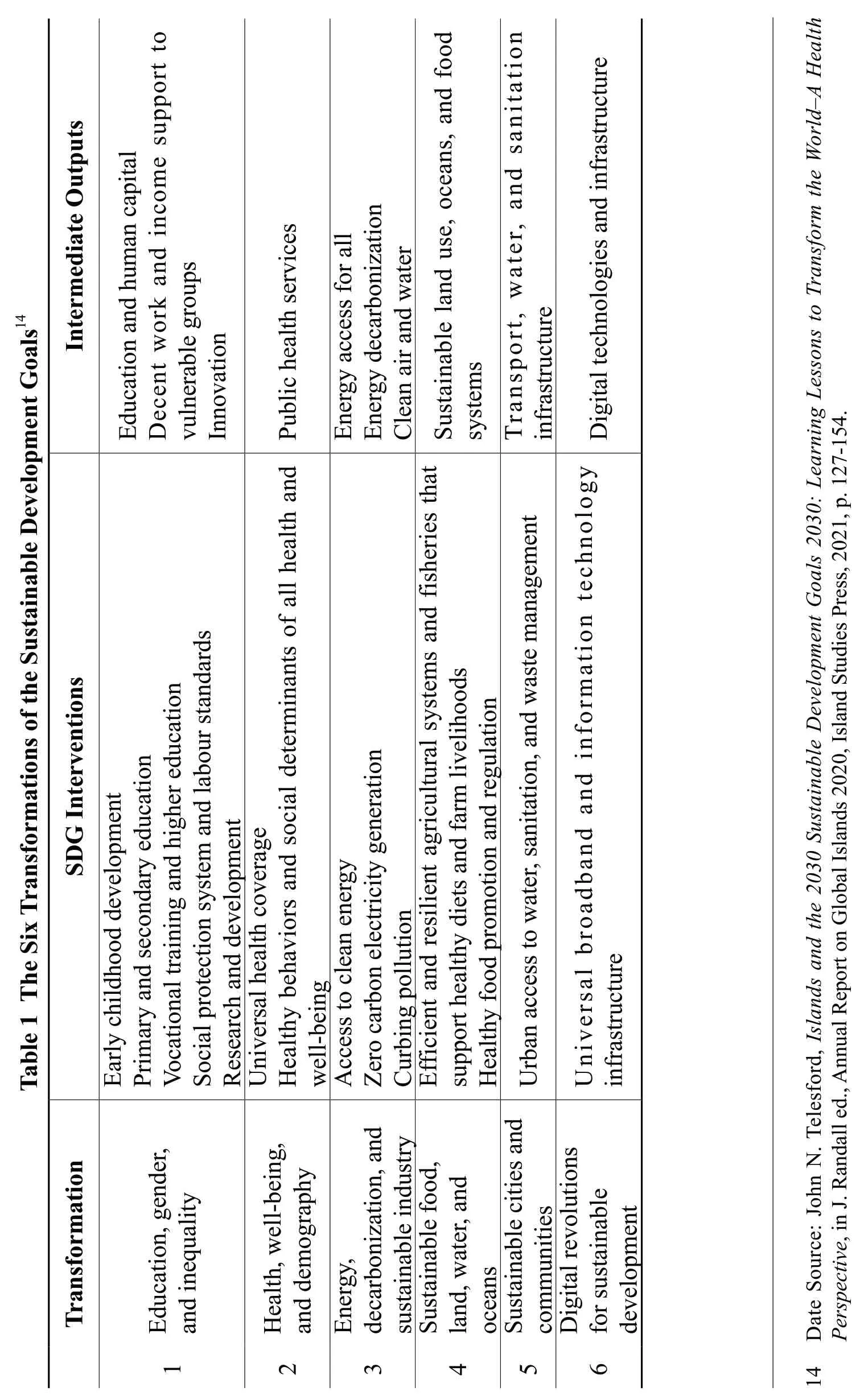
On a granular or indicator level,169 targets and over 200 indicators were agreed to measure progress towards meeting the SDGs.15Supra note 5,UNGA.It is of critical importance therefore,to first understand how a country is performing on each SDG and then consider how policies will be developed and implemented to drive what Sachs refers to as “goal-based development”.16Jeffrey D.Sachs,The Age of Sustainable Development,Columbia University Press,2015.From this perspective,Sachs and colleagues developed a comprehensive analysis and measurement of how 165 countries are doing on each of the SDGs.17Supra note 6,Jeffrey D.Sachs et al.The report provides a “status” and “trends” analysis for each of the SDGs and from this perspective countries are ranked based on an SDG index that are reported on a comprehensive dashboard.18Id,p.70-72.The trends are interpreted as shown in Table 2.
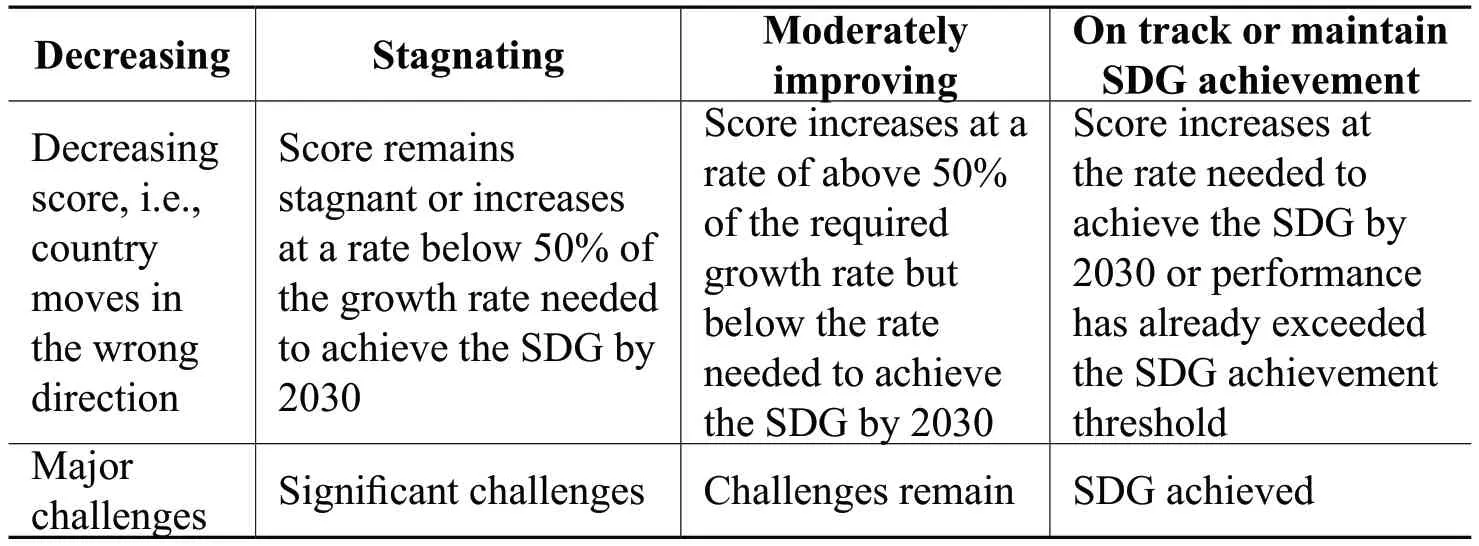
Table 2 The Four-Arrows System for Denoting SDG Trend19Data source:Id,p.72.
The second key component of the report is the selection and measurement of the indicators for each of the SDGs,and the thresholds that denote extremes of “major challenges” and “SDG achieved”.Generally,indicators to measure progress toward sustainability or sustainable development has been widely applied and discussed.20Simon Bell &Stephen Morse,Sustainability Indicators:Measuring the Immeasurable?,Earthscan,2008.However,the SDGs have provided a universal set of indicators that are focused on the 3Ps of sustainable development.It was already established that there is a need for a holistic approach to understanding this progress,but with the option for considering this from the perspective of one of the pillars or more specifically a specific SDG.In this regard,developed a suite of indicators for the 17 SDGs and report on their status for all countries,including island countries.21Supra note 6,Jeffrey D.Sachs et al.Measuring progress on the SDGs therefore,serve as a global and local approach to quantitatively assess a country’s status on achieving sustainability or moving on a trajectory of sustainable development.
B.SDG 14,the BE and Measuring Island Sustainable Development
Smaller Island States (SISs) or independent countries have all adopted the SDGs.Sub-National Island Jurisdictions (SNIJs),which are linked politically to “motherlands”,such as Aruba which has a link to the Netherlands are not a part of that adoption.In this regard,the SDGs can be applied to measuring island sustainable development.Simon Bell and Stephen Morse,noted that in an effort to understand sustainable development holistically,it may be prudent to consider it from a sectoral perspective.They further indicated:“Given that sustainable development,agriculture,cities and institutions,is a practical goal to be reached by intervention of some sort,one clearly needs to be aware of whether the system is still unsustainable or whether the goal of sustainability has been reached”.22Supra note 20,Simon Bell &Stephen Morse.In the context of this paper therefore,an attempt is made to understand island sustainable development from the lens of the BE,which is related to SDG 14 and its indicators.
The relevance and link of the BE to island sustainable development,especially in the Caribbean and Indian Ocean is established in the literature.23Supra note 3,UNDP;Supra note 7,UNCTAD;Supra note 7,Marie-Therese Purvis;Supra note 7,Pawan G.Patiletal;Supra note 7,Julian Roberts &Ahmed Ali;C.Rustomjee,Developing the Blue Economy in the Caribbean and Other Small States,Center of International Governance Innovation,Policy Brief,No.75,2016;Supra note 4,World Bank &United Nations Department of Economic and Social Affairs;Marleen S.Schutter &Christina C.Hicks,Networking the Blue Economy in Seychelles:Pioneers,Resistance and Power Influence,Journal of Political Ecology,Vol.26:1,p.425-447 (2019).In this regard,Julian Roberts and Ahmed Ali elaborated the potential for the BE’s contribution to the development of SIDS;24Supra note 7,Julian Roberts &Ahmed Ali.while Pawan G.Patil and colleagues,did a similar analysis of how the BE can support development in the Caribbean region.25Supra note 7,Pawan G.Patil et al.From this perspective,one of the key factors that makes the BE so important to the sustainable development of islands is the relatively high ratio of the exclusive economic zone (EEZ) of the island to its land mass.For example,Grenada’s EEZ is about 70 times larger than its land area.Moreover,fishing and tourism have been identified as traditional key sectors of the BE that will continue to contribute to islands’ development;while pollution and its impacts on coral reefs and other near shore ecosystems are of continued concern.26Supra note 3,UNDP.New sectors such as offshore renewable energy and seabed mining were identified as new sector that may be of relevance to small islands.27Supra note 8,Mark J.Spalding.
More recently,researchers began to pay attention to specifically aligning the BE to the SDGs.28Supra note 8,Camilla Novaglio et al.;Supra note 8,Lee Ki-Hoon,Noh Junsung &Khim Jong Seong;Kirsty L.Nash,Jessica L.Blythe,Christopher Cvitanovic,Elizabeth A.Fulton,Benjamin S.Halpern,E.J.Milner-Gulland,Prue F.E.Addison,Gretta T.Pecl,Reg A.Watson &Julia L.Blanchard,To Achieve A Sustainable Blue Future,Progress Assessments Must Include Interdependencies Between the Sustainable Development Goals,One Earth,Vol.2:2,p.161-173 (2020).In this regard,Nash and colleagues conducted assessments of the link between SDG 14 and the BE and interactions with other SDGs in SIDS in Caribbean,Pacific and AIMS regions.29Id,Kirsty L.Nash et al.They proffered,that the lack of understanding on how the SDGs,which are intended to demonstrate interaction amongst society,environment and economy,can be masked at the indictors levels and then goes on to analyze three examples of interactions between SDG 14“Life Below Water” and SDG 1“No Poverty”,SDG 2“Zero Hunger” and SDG 5“Gender Equality” for some islands.30Ibid.Moreover,Mark J.Spalding argued that “ … the human relationship with the ocean is changing … ” and further observed:
Particularly noteworthy in this context is target 14-7,which declares by 2030 increases in the economic benefits to small islands developing states(SIDS) and least developed countries (LDCs) from the sustainable use of marine resources,including through the sustainable management of fisheries,aquaculture and tourism.This focus on economic development of SIDS and LDCs is starting to create a shift in management and protection of marine resources and their social and economic impact.31Supra note 8,Mark J.Spalding.
Although the “economic growth” focus of the BE is questioned,32Irmak Ert?r &Michael Hadjimichael,Editorial:Blue Degrowth and the Politics of the Sea:Rethinking the Blue Economy,Sustainability Science,Vol.15,p.1-10 (2020).the literature suggest that this has led to the analysis and understanding of the synergies and possible trade-offs between SDG 14 and other SDGs.33John N.Telesford,Climate Change and the Case of Grenada’s Blue Growth Plan:Using the SDGs to Propose A Policy Planning Framework for SIDS’s Sustainable Development,in S.Moncado et al.eds.,Small Island Developing States:The World of Small States,Vol.9,Springer,2021,p.307-327;Supra note 8,Lee Ki-Hoon,Noh Junsung &Khim Jong Seong.Lee and colleagues concluded that:“The concept of the BE and its link to the UN’s SDGs offers a way to develop locally grounded and global scaled directions.‘Seeing the forest and the trees’ can change how researchers view the BE-SDG link to solve complex interconnected challenges”.34Id,p.5.Spalding further identified a number of key SDGs that are linked to SDG 14,summarized in Table 3.35Supra note 8,Mark J.Spalding.

Table 3 SDGs that link to SDG 14
Additionally,Sachs and colleagues conducted a comprehensive analysis of the SDGs interactions in the context of the six transformations introduced in the abovementioned literature review.36Supra note 12,Jeffrey D.Sachs et al.For Transformation 4“sustainable food,land,water and oceans”(see Table 1),the interactions with other SDGs and transformations are demonstrated in Table 4.With the exception of SDG 9—Industry,Innovation and Infrastructure,all the other SDGs listed in Table 3 were identified as either reinforcing or directly targeting SDG 14 enshrined in the transformation on “sustainable land use,oceans and food systems”.For example,“clean air and water” directly targets SDG 14,denoted by a “3” and “sustainable land use,oceans and food” also directly targets SDG 12—Responsible Consumption and Production.
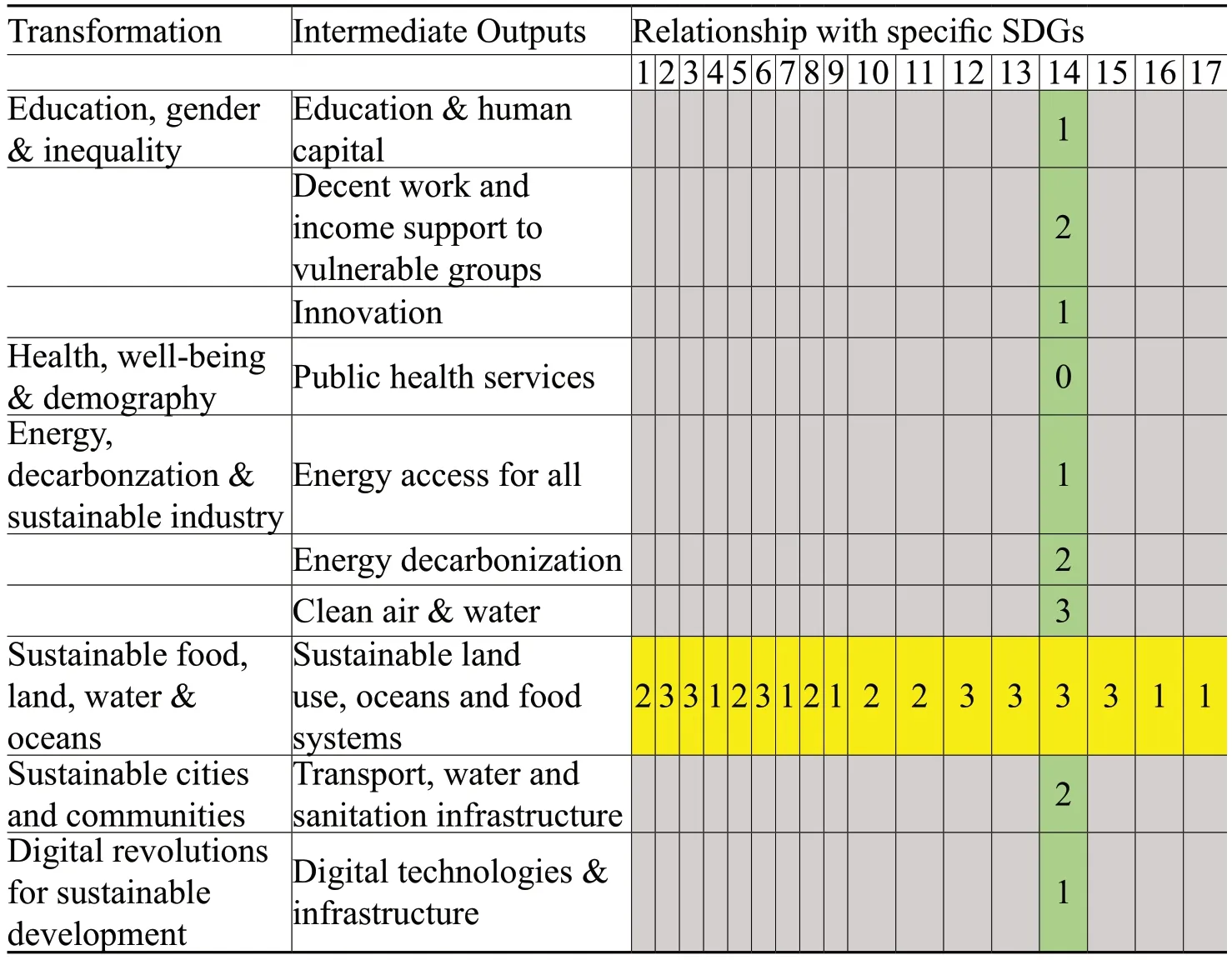
Table 4 Interactions of SDG 14 with all SDGs and the Six Transformations37Strengths of relationships denoted by numbers,where 3=directly targets the SDG,2=reinforces the SDG,1=enabling the SDG,and 0=no interaction.Adapted from note 12,Jeffrey D.Sachs et al.
The aims of the paper therefore,are to measure,analyze and compare and contrast how islands located in three diverse regions:Caribbean,Pacific and AIMS are progressing towards island sustainable development in the context of the SDG 14/BE nexus and its interactions with other SDGs.
III.Methods
A.Selection of Islands and Regions
Islands in the three main regions of the globe were identified:Caribbean,Pacific and AIMS region.38World Health Organization,Small Island Developing States Health and WHO:Country Presence Profile,WHO IRIS (2017),https://apps.who.int/iris/bitstream/handle/10665/255804/WHO-CCU-17.08-eng.pdf?sequence=1.Although Randall and Chapman used five continental locations to group island countries,the Author chose the three “Oceans/Seas” approach as they covered the majority of island countries in a smaller number of groups,making for a much easier comparison.39James Randall &Marlene Chapman,The State of Island Economies and Development in 2020,in James Randall ed.,Annual Report on Global Islands 2020,Island Studies Press,2021,p.13-59.Only island countries or SISs were chosen as data on the SDGs,and other social,economic and environmental data were most readily available and accessible.There are 58 SIDS listed by the United Nations.Thirty-eight of these SIDS are sovereign States or SISs.Only SISs were considered for selection.In this regard,11 (69%) of Caribbean SISs(CSISs),9 (100%) of AIMS SISs (ASIS) and 12 (92%) of Pacific SISs (PSIS) were selected.No restrictions were placed on size,population or economic development classifications,and all island countries,no land locked countries such as Haiti or Guyana were selected.
B.Methods-indicators Selection and SDG 14 Thresholds
Three well know proxies for socio-economy—Gross Domestic Product per capita (GDP per capita) and Human Development Index (HDI) and for socioecological—population density,were chosen as key comparative indicators of sustainable development.The mean for each of the socio-economic and ecological indices were computed for each island.Means analysis was applied by Jerome L.McElroy and Kimberly J.Medek in comparative economic analysis of Pacific and Caribbean small islands.40Jerome L.McElroy &Kimberly J.Medek,Small Island Economies:Caribbean versus Pacific,Bank of Valletta Review,Vol.4,17-32 (2012).The islands’ and the regions’ means are reported in the results section.
TheGlobal Sustainable Development Report,41Supra note 6,Jeffrey D.Sachs et al.has been attempting to measure,on a global scale,progress on the SDGs.As presented in the literature review,the status and trend on how each country is doing on each indicator is pictorially described (see Table 2),and this is derived from an analysis of a more granular number of indicators for each SDG.For SDG 14,there are six indicators,with lower and upper thresholds,that were measured (see Table 5).These are aligned with the color-coded descriptions in table 2.
Indictor values for the majority of the island countries were reported in Sachs’sustainable development report.Firstly,we report on the progress of each of the island countries using the interpretation in Table 2.In the second step,we take a granular approach,by calculating a mean value for each of the group of islands.We only calculate mean values for indicators if at least 80% of the islands in each group,which had data for each indicator.In this regard,for ASISs,six/six indicators;CSISs four/six indicators and PSISs four/six indicators were plotted.By using the mean values for each indicator in each island group,radar graphs were plotted against the green threshold in Table 5.42Id,p.85.Additionally,the indicators judge progress on the SDGs as either increasing or moving towards and exceeding the green threshold as in the MPA and OHI and decreasing or moving below the green threshold for:FOCF,FCTD,FCD,and MBEI.
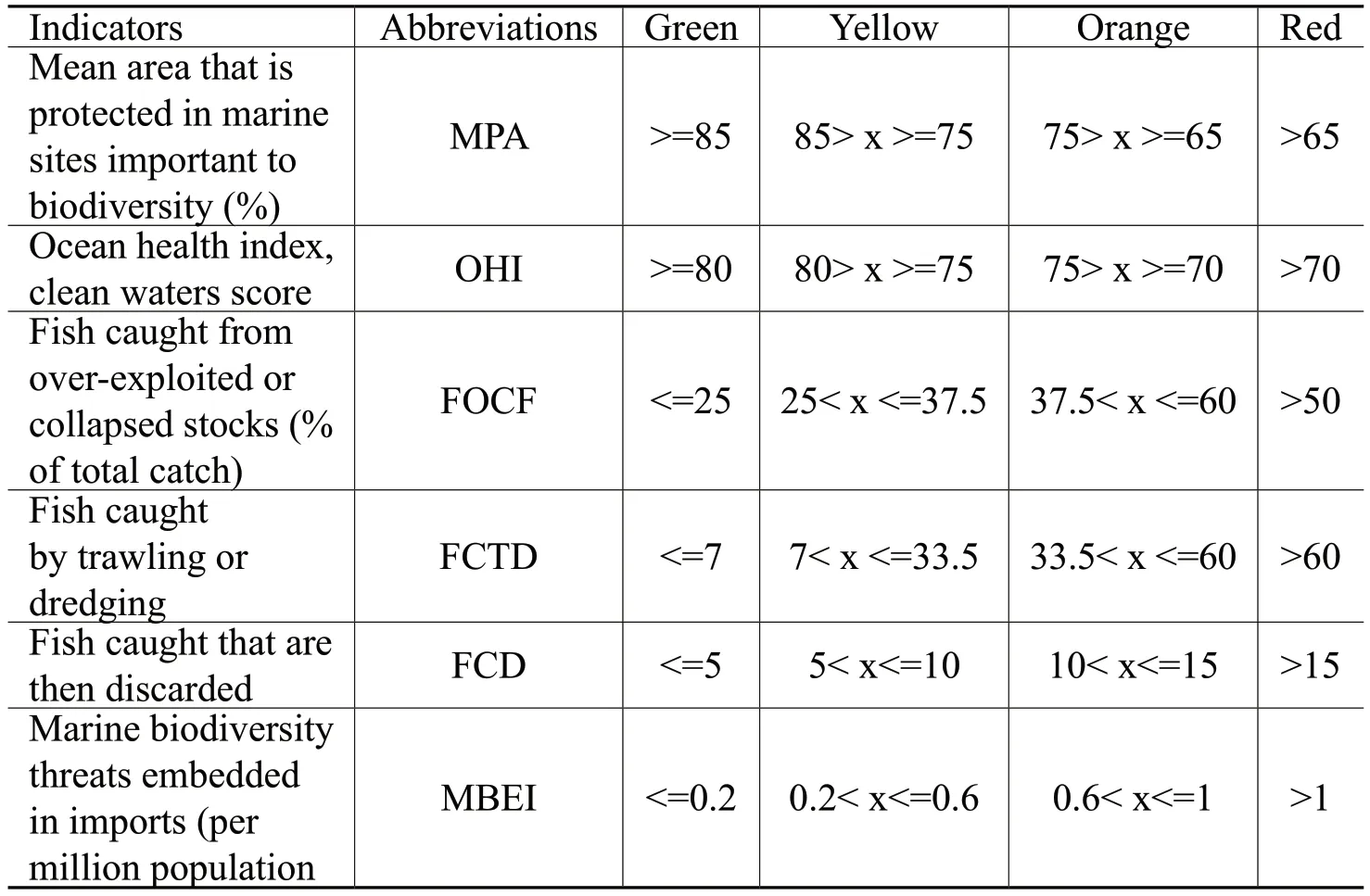
Table 5 SDG 14 Indicators and Thresholds
C.Results and Analysis
Table 6 shows the results of the key socio-economic and socio-ecological indicators of the countries in each of the regions.The extremes in GDP per capita were identified and explained by McElroy and Medek,and found that the Caribbean outperformed its Pacific counterparts,which is also revealed here.43Supra note 40,Jerome L.McElroy &Kimberly J.Medek.The population densities of islands have been reported to be generally higher in islands,with extremes ranging from zero to 7,000 people per square kilometre.located in the AIMS region.44Gabriella Baldacchino,Island Enclaves:Offshoring Strategies,Creative Governance and Subnational Island Jurisdictions,McGill-Queen’s University Press,2010.This extreme explains the highest mean in the ASIS region,where the island country Singapore with one of the highest population densities,is located.GDP per capita in the Pacific is four times lower than that of the Caribbean,which is consistent with the findings of McElroy and Medek.45Supra note 40,Jerome L.McElroy &Kimberly J.Medek.However James Randall and Marlene Chapman pointed out that “positive [GDP]… does not necessarily tell the true story”,46Supra note 39,James Randall &Marlene Chapman.especially in island countries.Finally,the mean HDIs for the Caribbean and AIMS regions are above the island countries’average of 0.728,but are all above the “l(fā)ow human development index” threshold of 0.554,with no individual island in any of the groups having a low HDI.47UNDP,Human Development Report 2020:The Next Frontier -Human Development and the Anthropocene,United Nations Development Program,2020.Randall and Chapman concluded that although islands perform generally well in terms of their development trajectory,“The diversity of SIDS mean that a ‘one size fits all’ development approach is not warranted”.48Supra note 39,James Randall &Marlene Chapman.This is given consideration in the context of discussing island sustainable development in these “diverse” regional contexts.

Table 6 Island Regions and Socio-economic and Ecological Indicators
Table 7 and Figure 1 show the results for the ASISs interpretation of how they are doing with SDG 14 and specifically with SDG 14 indicators,respectively.Generally,these islands have been assessed to be experiencing major challenges and are stagnated on progress,with the exception of Maldives,Sao Tome and Principe,and Seychelles which are moderately improving.This observation is consistent with how the region as a whole is performing with the six indicators in Figure 1,with MPA and OHI below the “green” thresholds of 85 and 80 respectively,while FOCF,FCTD,FCD and MBEI are slightly exceeding the required “green” thresholds.

Figure 1 Results on ASISs Progress with SDG 14 Indicators51Data source:Ibid,graph drawn by the Author.
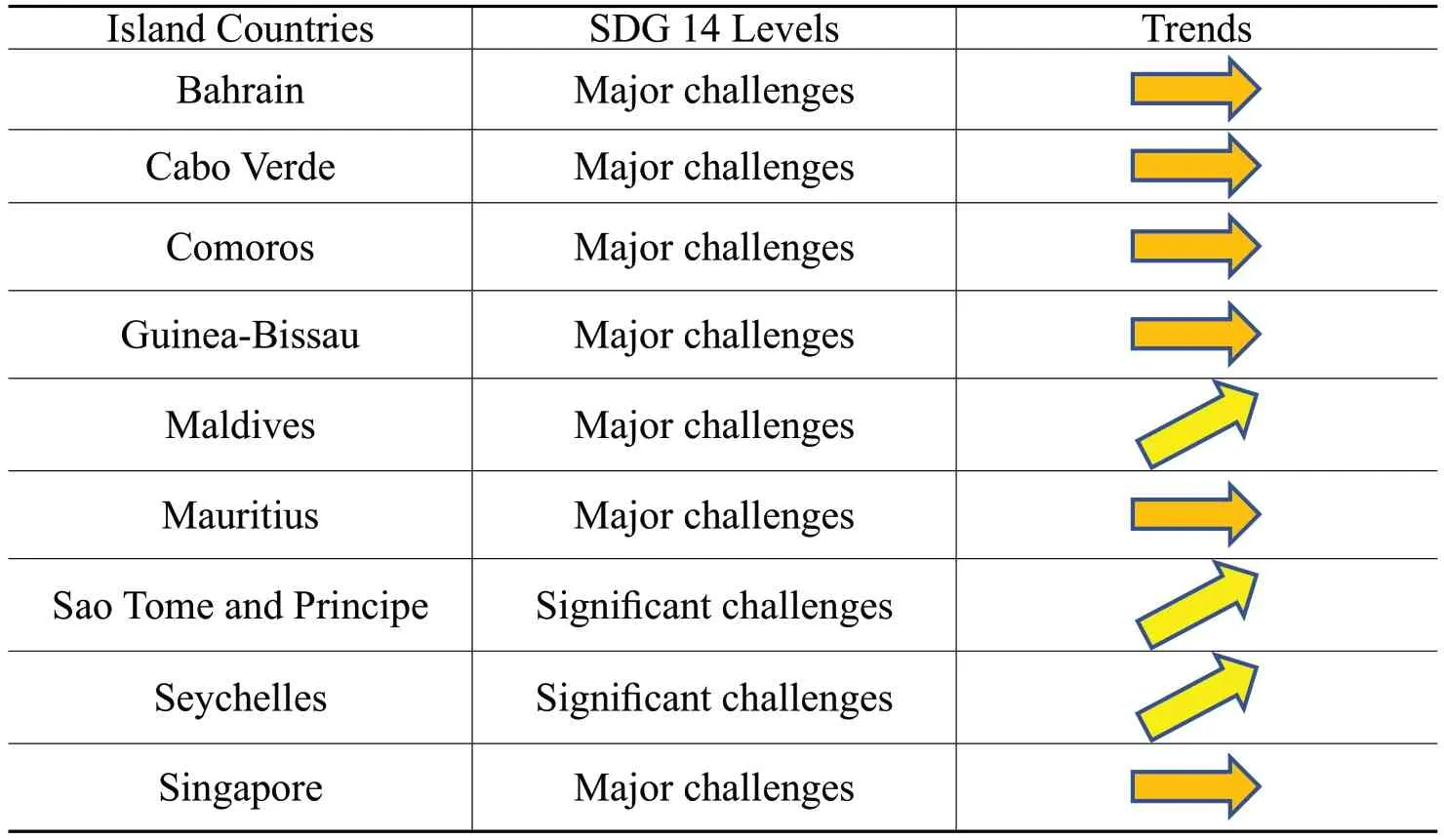
Table 7 ASISs Status with SDG 14 Indicators50Data source:Supra note 6,Jeffrey D.Sachs et al.,compiled by the Author.
For the CSISs region (see Table 8 and Figure 2),all the countries assessed experience major challenges with meeting SDG 14.Only one country—Dominica seemed to be making some improvement,while Trinidad and Tobago is actually declining.Additionally,and also consistent with the assessment,the region as a whole was not meeting the green thresholds of the four indicators measured (see Figure 2).
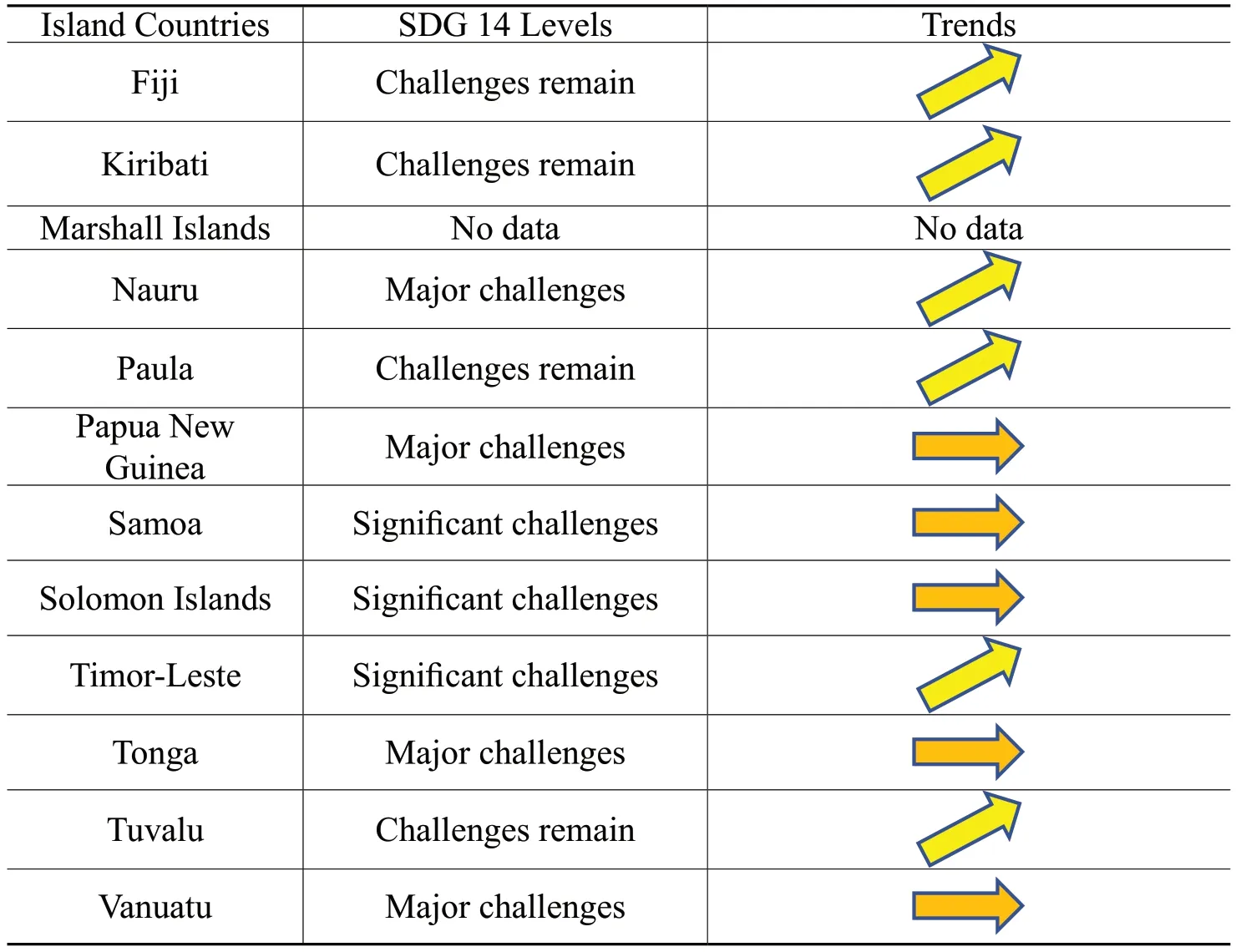
Table 9 PSISs Status with SDG 1454Data source:Ibid,compiled by the Author.
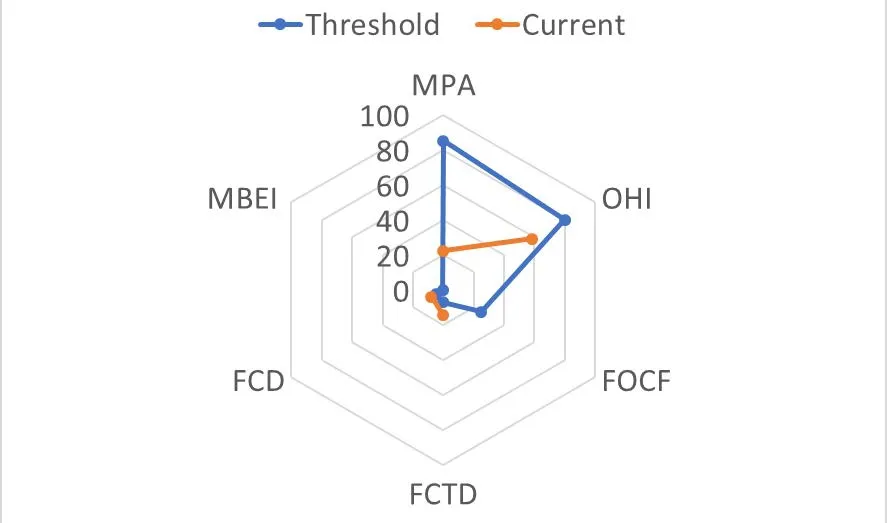
Figure 2 Results on CSISs Progress with SDG 14 Indicators53Data source:Ibid,graph drawn by the Author.
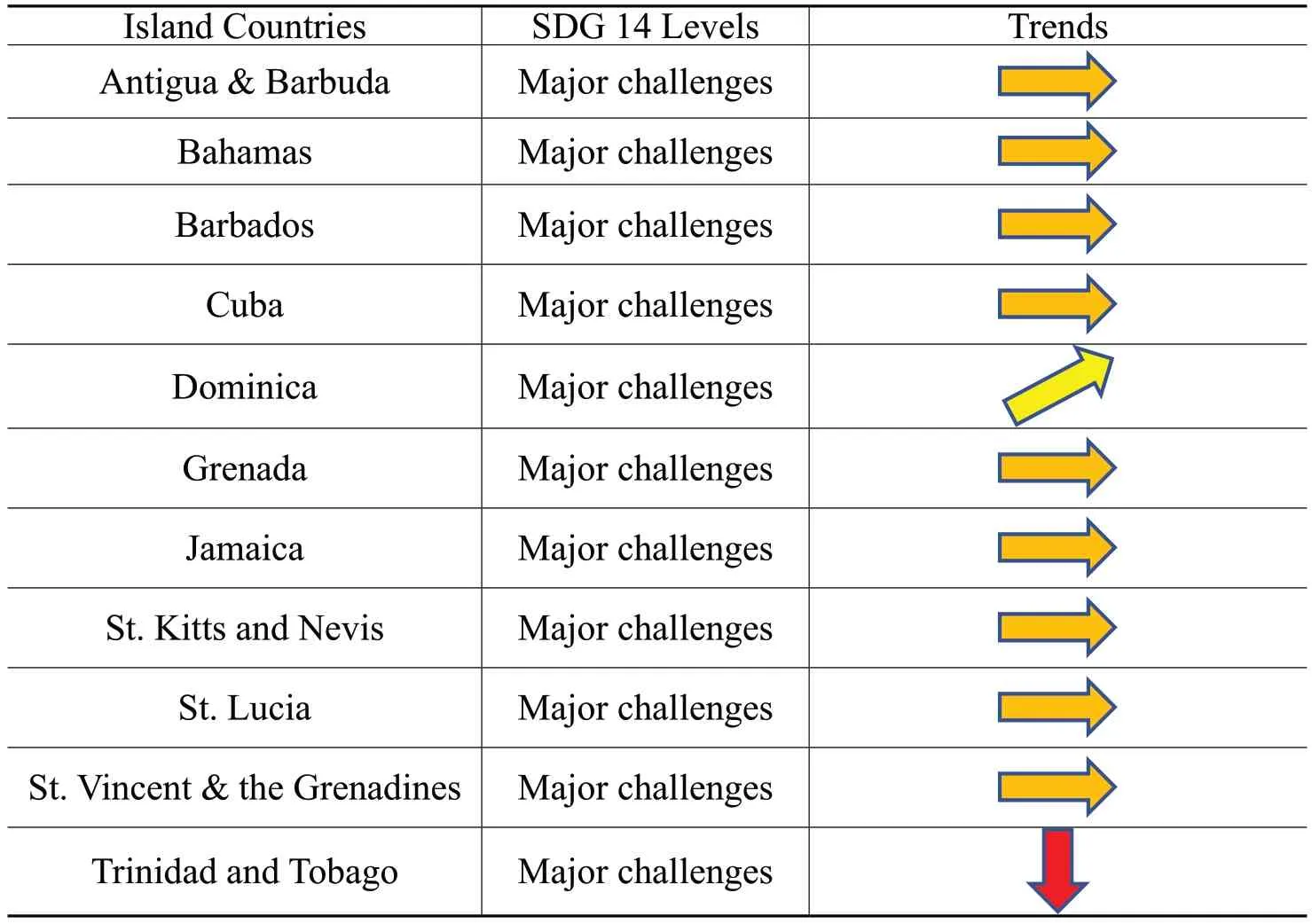
Table 8 CSISs Status with SDG 1452Data source:Ibid,compiled by the Author.
The assessment for the PSISs (see Table 9),shows that only four countries are experiencing major challenges with SDG 14 and that half of the countries are moderately improving.Although this region has proven to be fraught with data gaps,four indicators were measured (see Figure 3).For the MPA indicator,the region is generally significantly below the green threshold of 85.However,for the FOCF,FCTD and FCD,the region is progressing nicely,with means below the green thresholds of 25,7 and 5,respectively.In fact,for the latter two the region is very close to the optimum values of 1 for FCTD and zero for FCD.
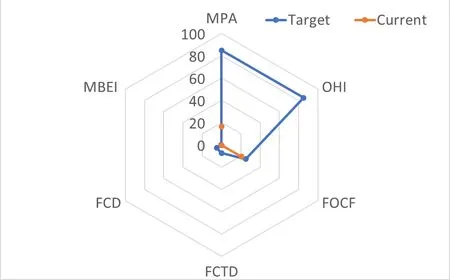
Figure 3 Results on PSISs Progress with SDG 14 Indicators55Data source:Ibid,compiled by the Author.
These regional perspectives,did not reveal many significant differences with how the SISs as a group were doing with SDG 14 and the indictors used to measure their progress.However,erring on the side of cautious,one may note that the PSISs seemed to be faring better with SDG 14,compared to their Caribbean and AIMS counterparts.A closer look at individual countries’ performances with specific indicators in the Pacific region,show that for the FOCF 8/12 islands are performing at the green threshold;FCTD 12/12 are in the green zone,with all but one at the optimum level of zero and for FCD 10/12 countries are at the green threshold.A second note of interest is that the Pacific region ranked lowest on all the socioeconomic and ecological indices in Table 6.In the case of the HDI all the countries in the PSIS region were in the medium to high ranks of the HDI,with only Palau in the very high category;compared to two countries,Barbados and the Bahamas in Caribbean region and Bahrain,Mauritius and Singapore in the AISM regions.Therefore,a lower mean HDI may have no significant bearing on how the region was progressing with SDG 14 compared to other countries or regions.
IV.Discussion
A.Towards Island Sustainable Development
Island sustainable development can hardly be discerned or fully analyzed from the perspective of SDG 14 and its indicators alone.But due to the strong links between islands and SDG 14/BE,it serves as a good starting point to measure the sustainable development of islands.But,the BE as a new economic savior for islands can lead to unintended outcomes if the pillars of society and environment are ignored.In this regard,Bennett and colleagues noted that,small islands have seen promise in the BE with the proviso of ensuring “social equity” and “environmental sustainability”.However,the apparent “push for economic growth through ocean development is sidelining these tenets in policy and practice.Unbridled ocean development risks producing substantial harms for both the marine environment and human well-being”.56Nathan J.Bennett et al.,Towards A Sustainable and Equitable Blue Economy,Nature Sustainability,Vol.2,p.991-993 (2019).It is extremely important therefore,for island decision makers and stakeholders to monitor SDG 14 indicators and other social and environmental indicators related to the SDGs and those that may not be enshrined in the SDGs,to ensure that island sustainable development can be achieved.
Additionally,the development trajectory for each island region and for each individual island will be very diverse with regional and specific island contexts,as “one size does not fit all”.However,one approach that may allow policymakers,stakeholders and islanders to take an overarching strategy to plot relevant sustainable development trajectories can be achieved through a deeper analysis of how the SDG 14/BE link interplays with other SDG 14/BE related SDGs identified in the literature.These interactions can be considered through two complementary actions:Goal-based island sustainable development and integrated policy and stakeholder engagement.
B.Goal-based Island Sustainable Development
As a starting point,goal-based development was proposed by Sachs as an approach that the global community can apply to change course towards global sustainable development.57Supra note 16,Jeffrey D.Sachs,p.489.Four reasons are postulated for its application:(a)“… Goals are critical for social mobilization”;(b)“peer pressure” can be applied globally;(c) goals matter “ … in mobilizing epistemic communities” or “knowledge communities” and (d) goals “mobilize stakeholder networks”.58Id,p.490-491.Goal-based island sustainable development can be adapted by the island regions and indeed individual island countries (and SNIJs),for the same reasons listed.For example,islands that are meeting a particular SDG can place pressure on their peers within a regional group or on regional groups as a whole.However,goal-based development should begin with considering a particular SDG.In this case,SDG 14 and its indicators is the starting point,with an overview of how islands in a particular region or regions,are doing or meeting that particular goal.
In this regard,goal-based development and by extension goal-based island sustainable development,must move beyond the analysis of one SDG and targets,towards understanding how synergies are created with other goals and where possible trade-offs exist.Therefore,at the core of goal-based development is the integration of the SDGs described as the:“Sustainable development goals will include,not only the continuation of the fight against extreme poverty,but also the integration of that goal with several others,including social inclusion and environmental sustainability”.59Id,p.492.Spalding identified nine SDGs that are important when SDG 14 is analyzed (see Table 3).Moreover,Telesford considered a case analysis of how SDG 14 and particular targets interact in the case of Grenada’s blue growth plan,60Supra note 33,John N.Telesford.while Nash and colleagues comprehensively investigated interactions with three other SDGs.61Supra note 28,Kirsty L.Nash et al.As a first example at the targets and indicator levels,consider Target 14.7:“By 2030,increase the economic benefits to small island developing states … from the sustainable use of marine resources,including through sustainable management of fisheries,aquaculture and tourism”.An indicator under the target is Indicator 14.7.1“Sustainable fisheries as a percentage of GDP in small island developing States,least developed countries and all countries”,62Supra note 5,UNGA.which should be measured in the context of Indicator 14.4.1“Proportion of fish stock within biologically sustainable levels”.This is appropriately measured by “fish caught from over-exploited or collapsed stocks”(FOCF),“fish caught by trawling or dredging”(FCTD) and “fish caught and discarded”(FCD) (see Table 5).By juxtaposing these indicators,trade-offs between Indicator 14.7.1—improving proportions of GDP from sustainable fisheries,and Indicator 14.4.1,as a composite of the three indicators measured herein,can be analyzed.
A second example,elaborated by Telesford demonstrated the interaction between Indicator 14.5.1“Coverage of protected areas in relation to marine areas”,MPA or “Mean area that is protected in marine sites important to biodiversity” and Indicator 1.1.1“Proportion of the population below the international poverty line… ” and Indicator 1.2.1“Proportion of population living below the national poverty line … ”.63Supra note 33,John N.Telesford.A “reinforcing” relationship or synergy is concluded,64Supra note 11,ICSU.as healthy and productive oceans will improve fisheries,support islanders’ livelihoods,hopefully lifting them out of poverty.65Supra note 33,John N.Telesford.In other words,there is synergy between Indicators 1.1.1,1.1.2 and 14.7.1 as sustainable fisheries can reduce poverty through job creation resulting in an “indivisible” relationship or synergy between the indicators.However,a trade-off is possible.According to Telesford,increased pressure on the fisheries to reduce poverty can “constrain” meeting Indicator 14.5.1.66Ibid.
The final example examines interlinkages conducted by Nash et al.,who did similar analyzes using targets for SDGs 1,2 and 5.67Supra note 28,Kirsty L.Nash et al.They suggested,that the quest to meeting Indicator 14.5.1,may unfortunately marginalize certain groups,such as women,from accessing coastal and reef resources to support their lives,and as such may hinder achieving Target 5.a “Undertake reforms to give women equal rights to economic resources,as well as access to ownership and control over land and other forms of property,financial services,inheritance and natural resources,in accordance with national laws”.Palau which is on track to meeting Indicator 14.5.1 with measures to protect the fisheries and coastal environments,is proposed as an example,where simultaneously meeting Target 5.a is hindered as women in particular will have “reduced access” to coastal resources.68Id,p.167-168.
These examples reveal an important consideration for implementing goalbased development and specifically goal-based island sustainable development.First,it can lead to an understanding of how socio-economic and socio-ecological pillars of island sustainable development are interacting.In this regard,some of the indicators,such as Indicator 14.7.1 and in fact all the indicators analyzed in this paper,can be categorized as socio-ecological indicators,with their interactions discussed with other socio-economic indicators as Target 5.a on “gender equality” and Indicators 1.1.1 and 1.2.1 on “Poverty”.Secondly,synergies and tradeoffs between these indicators are also analyzed.This is extremely important to understanding island sustainable development,as making progress on one set of indicators may be “constraining”,“counteracting” or “cancelling” other indicators.69Supra note 11,ICSU.As Nash et al.concluded:“Interdependencies between the oceans and human well-being are being underemphasized in indicator-based progress assessments as countries try to meet the SDGs by 2030,meaning that appropriate actions might not be … operationalized.”70Supra note 28,Kirsty L.Nash et al.,p.167.This observation leads to the consideration which moves from goal-based development to integrated policy direction and stakeholder engagement,which is designed for policy-makers,stakeholders and islanders alike.
C.Integrated Policy and Stakeholder Engagement
Goal-based island sustainable development has revealed that island countries should move beyond “ticking off indicators;as met or not met”,towards grasping a more comprehensive understanding of how an SDG in question,like SDG 14 and indicators,can drive integrated policy direction that builds synergies and minimize trade-offs with other relevant SDGs.The results of this analysis and comparison has established a foundation for these island regions to see how they stack-up with the key indicators of SDG 14 and its link to the BE.This analysis was not intended to critique progress or lack therefore,but to provide a comparative understanding of how these regions in 2020 are doing with SDG 14.More importantly,this comparative research serves as a basis to drive individual or regional island approaches to integrated policy and stakeholder engagement for sustainable development,through organizations such as the Caribbean Community,or Pacific Island Countries Network or even at the level of an entire global islands group.As Sachs pointed out,building knowledge communities and networks and mobilizing society and stakeholder networks are critical reasons for goal-based development.71Supra note 16,Jeffrey D.Sachs.
The six transformations (see Table 1) and the proposed interactions among them and SDG 14 (see Table 4) lay a foundation for translating goal-based development into policy direction and for mobilizing society and other stakeholders towards island sustainable development.Michelle Voyer and colleagues recognized the relevance of policy coherence in a case analysis of implementing the BE in Timor-Leste and note that Target 17.14 calls for enhancing “policy coherence for sustainable development”.72Michelle Voyer,Genevieve Quirk,Alistair Mcilgorm &Kamal Azmi,Shades of Blue:What do Competing Interpretations of the Blue Economy Mean for Oceans Governance?,Journal of Environmental Policy and Planning,Vol.20:5,p.595-616 (2018).The Authors underscored the importance of this:“ … It is critical that any attempt to build a BE … aim for a coherent and coordinated approach across relevant maritime sectors,jurisdictions and public and private sectors.73Id,p.2.A key feature of the six transformations is identifying a number of “intermediate outputs” which will fall under a particular line ministry that has responsibility for creating and driving policy for the particular SDG(s)that fall within its ambits.In this example,the fisheries ministry will be one of the ministries taking on “sustainable land-use,oceans and food systems”,and will therefore be the lead on SDG 14/BE issues and applications in the island.However,the six transformations/SDGs interaction show that this intermediate output also relates to other SDGs and intermediate outputs.For example,the intermediate output reinforces “decent work and income support to vulnerable groups” and directly targets “clean air and water” intermediate outputs,which may possibly be led by other ministries or departments.
These examples lend themselves to two actions that island policymakers can take with implementing the SDGs as a whole,which was recently demonstrated in island contexts by Telesford using SDG 3“Good Health and Well-being”.74Supra note 14,John N.Telesford,2021a.Firstly,this approach can assist with guiding the development of integrated policies.According to Sachs,“many policy interventions … are needed to achieve each SDG,and each intervention generally contributes to several goals”,75Supra note 12,Jeffrey D.Sachs et al.,p.805.and different government ministries will have the responsibility to develop and implement policies to ensure that the SDGs,which are mostly aligned to local plans,are been implemented.Therefore,as individual islands and/or groups analyze progress towards SDG 14 and the implementation of the BE,the opportunity is presented to investigate how other polices that may guide SDG 6“Clean Water and Sanitation” or curbing pollution (see interactions in Table 4),can be considered.In this regard,policymakers and technocrats in the responsible line ministries and departments should be engaged.Additionally,integrating policies developed by ministries,departments and other organizations dealing with SDG 8 linked to “decent work and income support to vulnerable groups” should also be considered.The latter example is extremely important from the perspective of implementing,measuring and monitoring the MPA indicator,as livelihoods can be negatively affected thus constraining meeting SDG 8 and others as discussed previously.
Stakeholder engagement is also important for policy development,buy-in and implementation.Sachs and colleagues noted that the six transformations allow policy makers:
… to organize SDG interventions through a semi-modular action agenda that can be designed by discrete,yet interacting,components of government.Each Transformation engages a different subset of business and civil society,facilitating targeted problem-solving,clear communication and mobilization of stakeholders.So not only do the six transformations allow for the integration of policy,it allows for engaging stakeholders that may not be considered or known to be relevant to the BE and SDG 14.76Ibid.
Telesford noted that:In theDecade of Action (2020-2030)declared by the United Nations,“ … stakeholder engagement and involvement with the implementation of the SDGs will be critical and,in this regard,there will be a need for island governments to make a concerted effort to engage all stakeholders to achieve the SDGs locally”.77Supra note 14,John N.Telesford,2021a,p.146.With the six transformations,stakeholder consultations on the SDG 14/BE can now include other SDGs such as the those discussed in the paper.Telesford concluded:“Ministries … will be better placed to engage stakeholders with a more streamlined and integrated approach,as opposed to the presentation of a whole plan or parts of the plan that may not have taken into consideration all the relationships between the SDGs.”78Ibid.In this regard,stakeholders who may seemingly not be associated with the BE can be engaged.
V.Concluding Thoughts
Island sustainable development may be measured using the SDGs.However,this should not be applied as a “tick-box” approach,but rather in an integrated and holistic manner,which is the intent for implementing the sustainable development agenda 2030.One key sector that is important to island sustainable development is the BE which was shown to be tightly coupled to SDG 14.Therefore,this first attempt to use SDGs data to compare and contrast how islands were meeting SDG 14,may have demonstrated how island sustainable development can be measured using the SDGs.Although this data driven approach was able to use indicators to highlight progress with SDG 14,the paper also emphasized that a holistic approach is needed to ensure synergies are utilized and trade-offs minimized.It is therefore recommended that island decision makers take an integrated and holistic approach to using the SDGs to measure progress towards island sustainable development.From this perspective,two complementary strategies were suggested:Goal-based development and integrated policy and stakeholder engagement.
- 中華海洋法學(xué)評(píng)論的其它文章
- “藍(lán)色太平洋”愿景及其對(duì)太平洋島民的重要性與挑戰(zhàn)
- Understanding the Importance and Challenges of the “Blue Pacific” to Pacific Islanders
- 藍(lán)色經(jīng)濟(jì)視角下島嶼可持續(xù)發(fā)展的比較分析
- 太平洋島國(guó)研究之中國(guó)視角(1978—2020)
- China's Research on Pacific Island Countries(1978-2020)
- 新時(shí)期海島調(diào)查制度與科技供給銜接初探
——《海島保護(hù)法》視域下以促進(jìn)海島可持續(xù)發(fā)展為導(dǎo)向

